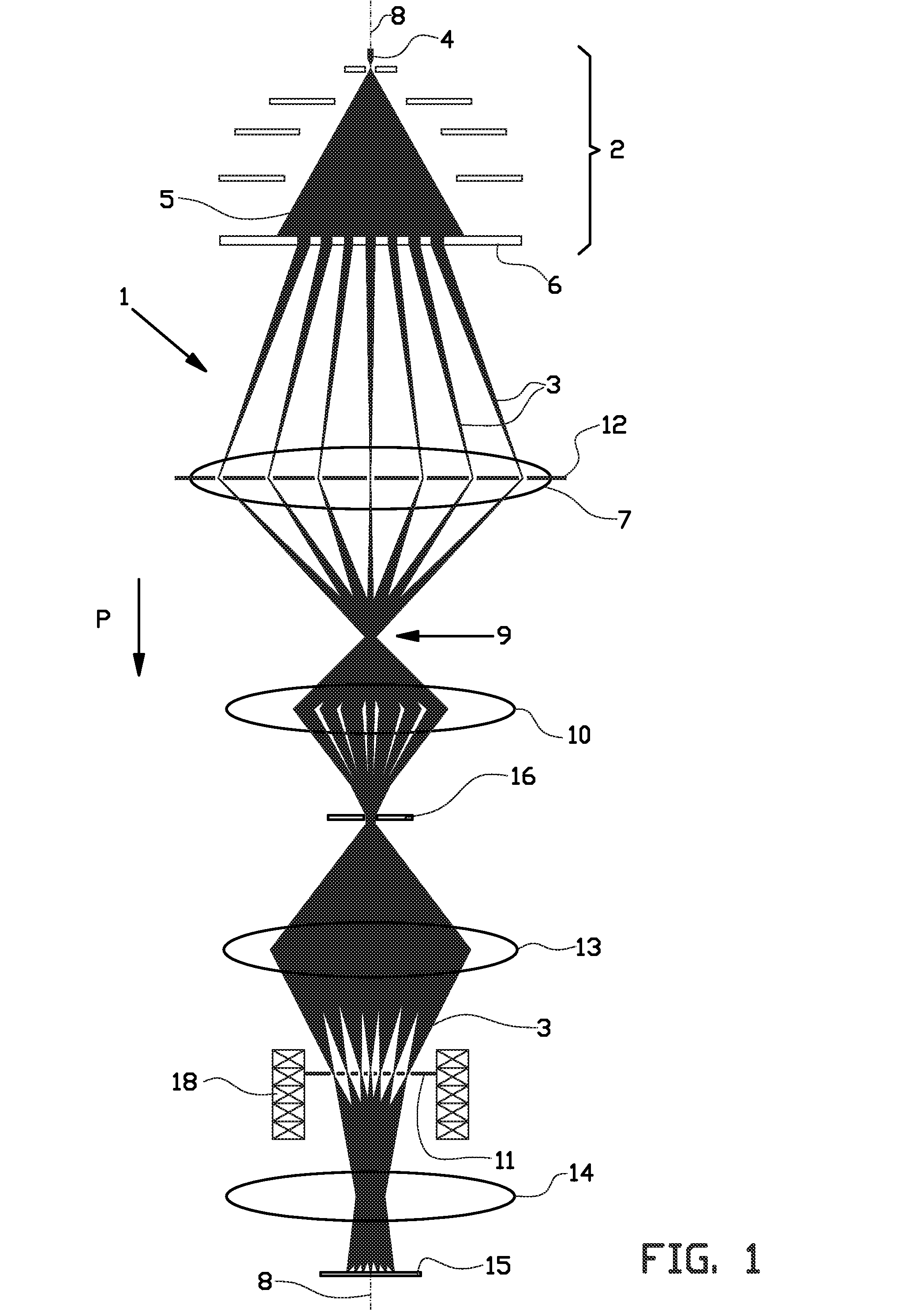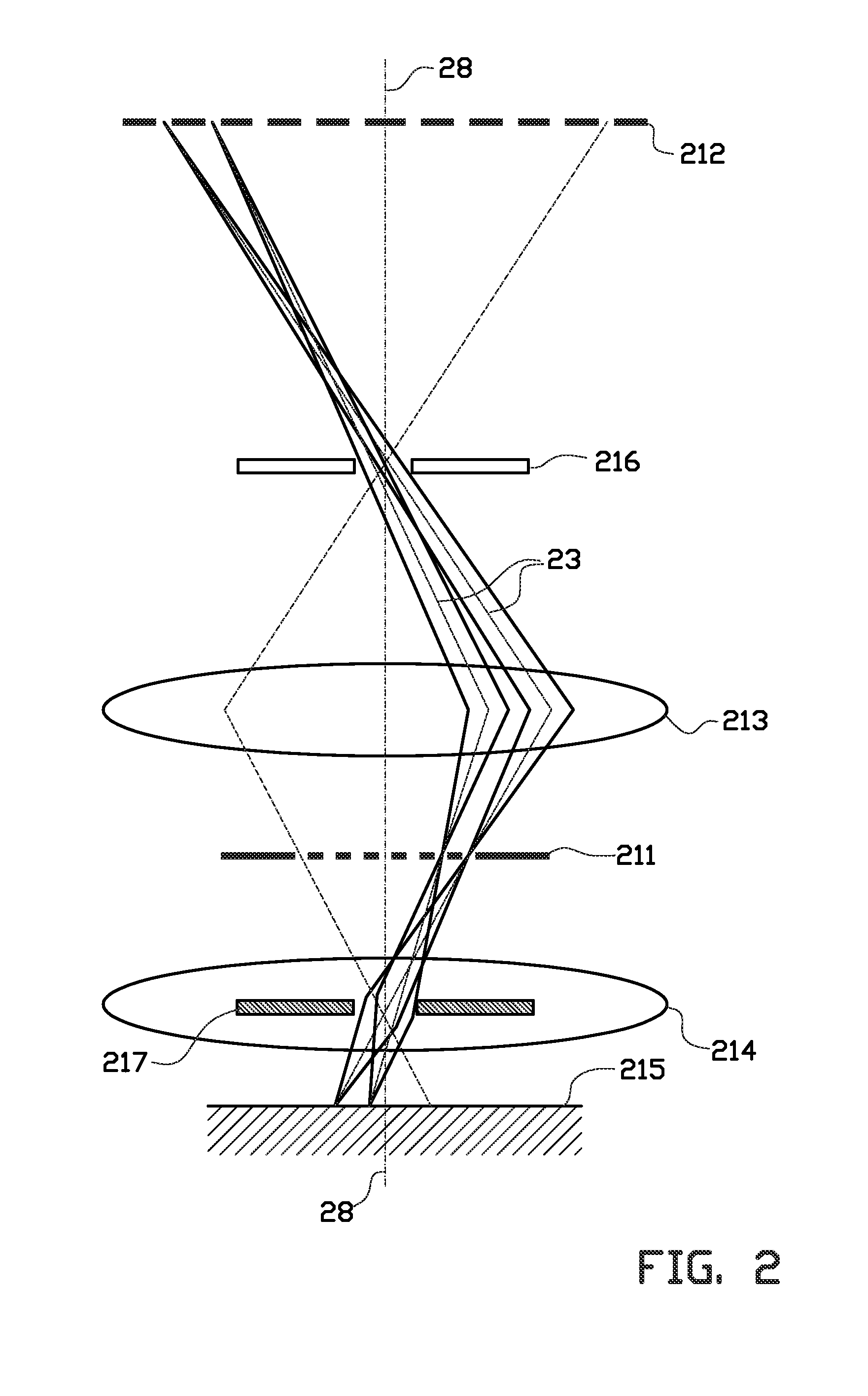Apparatus and method for inspecting a surface of a sample
a surface inspection and apparatus technology, applied in material analysis using wave/particle radiation, instruments, nuclear engineering, etc., can solve the problems of less suitable inspection of small samples and large distance between individual spots on the specimen surface, and achieve the effect of enhancing detection arrangement and reducing blur
- Summary
- Abstract
- Description
- Claims
- Application Information
AI Technical Summary
Benefits of technology
Problems solved by technology
Method used
Image
Examples
Embodiment Construction
[0053]FIG. 1 shows an example of a Multi-Beam Scanning Electron Microscope (MBSEM) of the invention.
[0054]The MBSEM 1 comprises a multi beam charged particle generator 2 for generating an array of primary charged particle beams 3, in this case an array of primary electron beams 3. The multi beam electron generator 2 comprises at least one electron source 4 for generating a diverging electron beam 5. The diverging electron beam 5 is split into an array of focused primary electron beams 3 by an aperture lens array 6. The primary electron beams 3 are subsequently directed towards a sample 15, as schematically indicated by the arrow P.
[0055]The multiple images of the source 4 are positioned on the object principle plane of an accelerator lens 7. The accelerator lens 7 directs the primary electron beams 3 towards the optical axis 8 and creates a first common cross-over 9 of all the primary electron beams 3.
[0056]The first common cross-over 9 is imaged by the magnetic condenser lens 10 on...
PUM
| Property | Measurement | Unit |
|---|---|---|
| angle | aaaaa | aaaaa |
| angle | aaaaa | aaaaa |
| angle | aaaaa | aaaaa |
Abstract
Description
Claims
Application Information
 Login to View More
Login to View More - R&D
- Intellectual Property
- Life Sciences
- Materials
- Tech Scout
- Unparalleled Data Quality
- Higher Quality Content
- 60% Fewer Hallucinations
Browse by: Latest US Patents, China's latest patents, Technical Efficacy Thesaurus, Application Domain, Technology Topic, Popular Technical Reports.
© 2025 PatSnap. All rights reserved.Legal|Privacy policy|Modern Slavery Act Transparency Statement|Sitemap|About US| Contact US: help@patsnap.com



